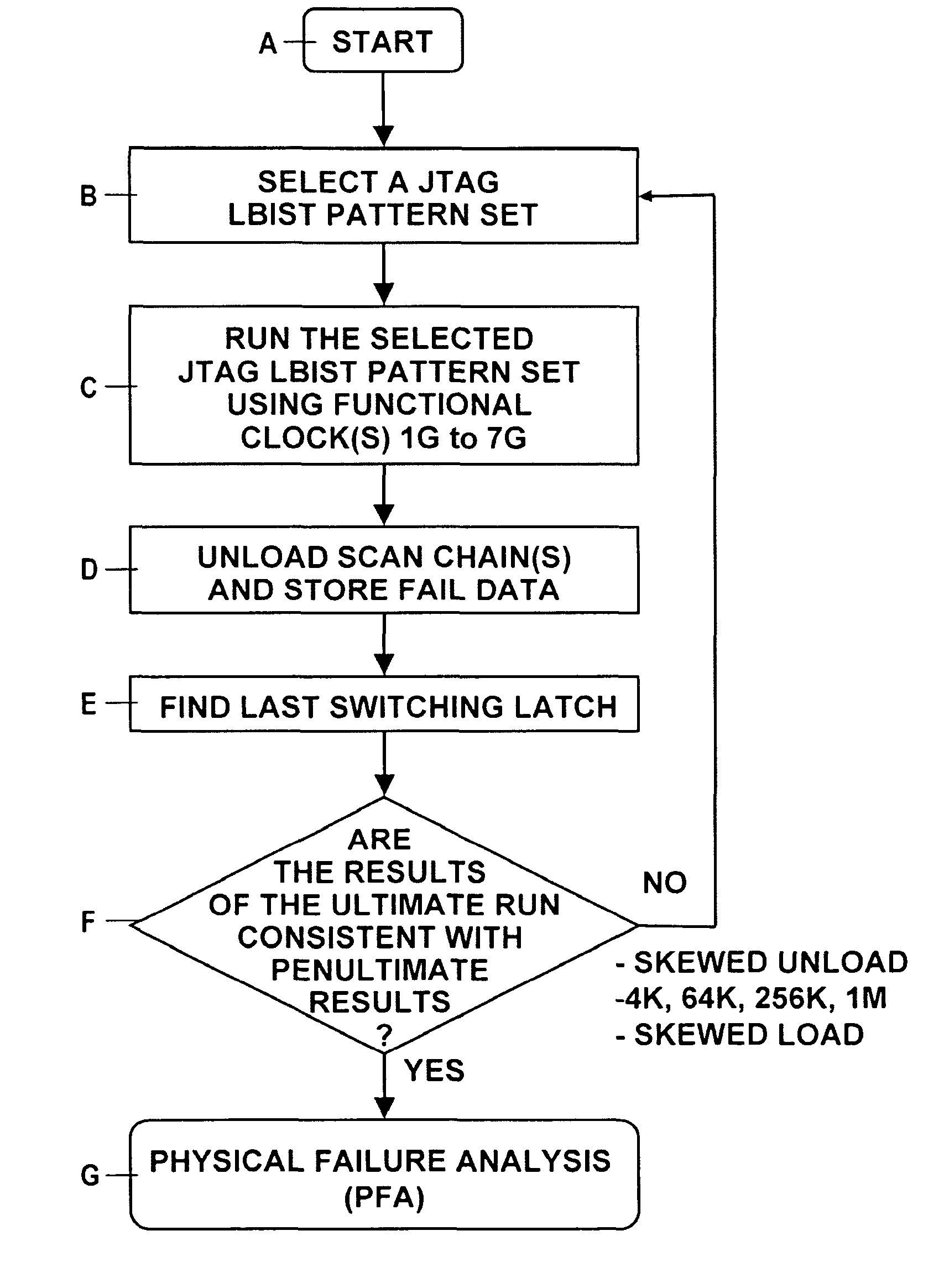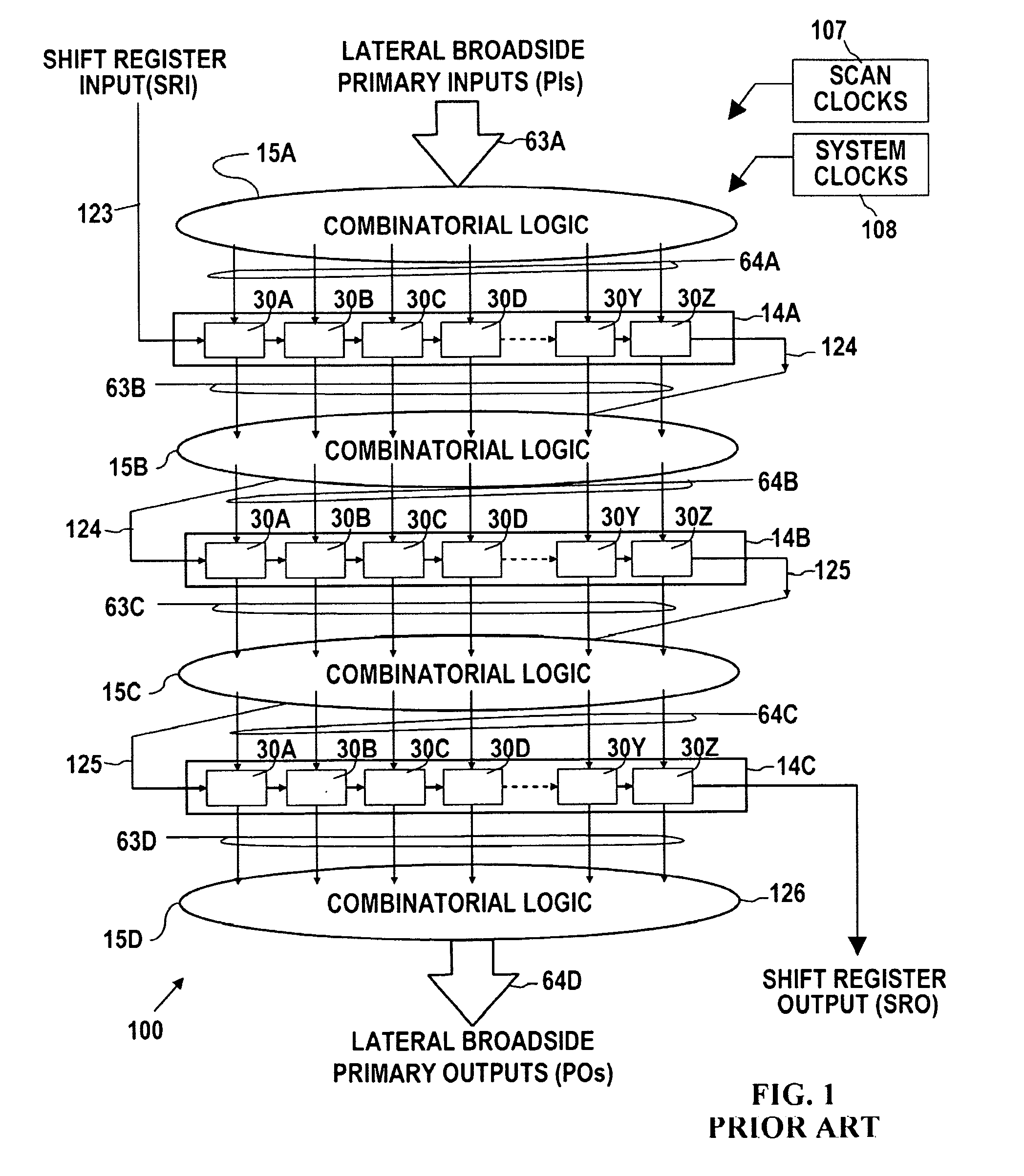Automated system and processing for expedient diagnosis of broken shift registers latch chains
a technology of automatic system and processing, applied in the direction of electronic circuit testing, measurement devices, instruments, etc., can solve the problems of reducing the access to the internal logic of the device, and affecting the accuracy of the scan chain
- Summary
- Abstract
- Description
- Claims
- Application Information
AI Technical Summary
Benefits of technology
Problems solved by technology
Method used
Image
Examples
Embodiment Construction
[0088]The present invention uses the JTAG functional test function / exercisor in a serial or a lateral broadside insertion manner across all latch system ports and to perform an efficient analysis of the response data so that switching and non-switching latches are readily identified with the next to last non-switching latch being the point of the break within the defective scan chain(s). This comprehensive latch perturbation, in conjunction with iterative diagnostic algorithms is used to identify and to pinpoint the location of a defective latch in each of the broken scan chain(s). This JTAG Functional test function and the JTAG test patterns ultimately derived therefrom, can take on different forms and can have different origins, some external to a product and some internal to a product. No test pattern generation is required.
[0089]JTAG pattern set(s) and functions are exercised as outlined above to generate broken scan chain diagnostic patterns. For example, upon loading the scan ...
PUM
 Login to View More
Login to View More Abstract
Description
Claims
Application Information
 Login to View More
Login to View More - R&D
- Intellectual Property
- Life Sciences
- Materials
- Tech Scout
- Unparalleled Data Quality
- Higher Quality Content
- 60% Fewer Hallucinations
Browse by: Latest US Patents, China's latest patents, Technical Efficacy Thesaurus, Application Domain, Technology Topic, Popular Technical Reports.
© 2025 PatSnap. All rights reserved.Legal|Privacy policy|Modern Slavery Act Transparency Statement|Sitemap|About US| Contact US: help@patsnap.com



